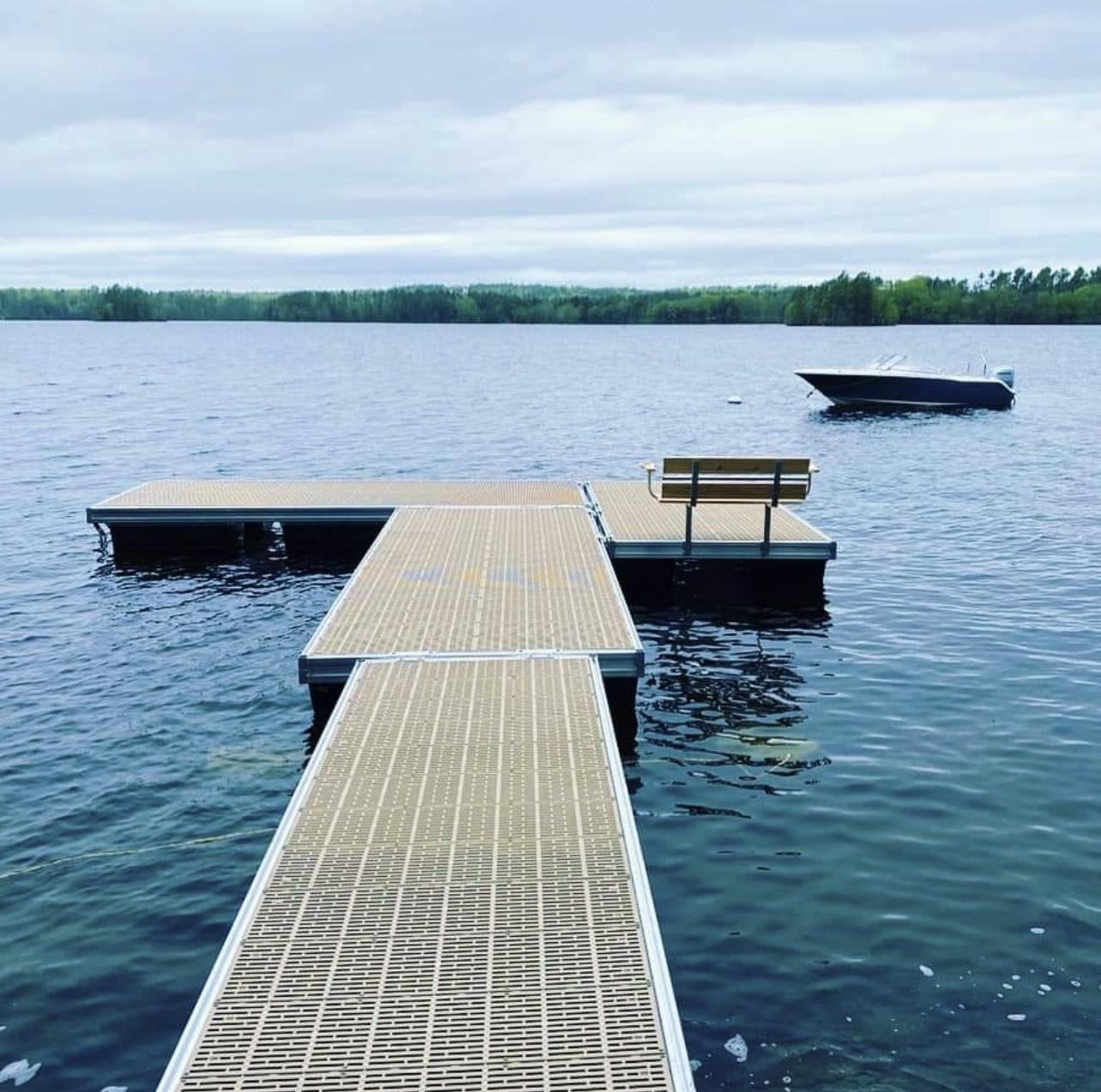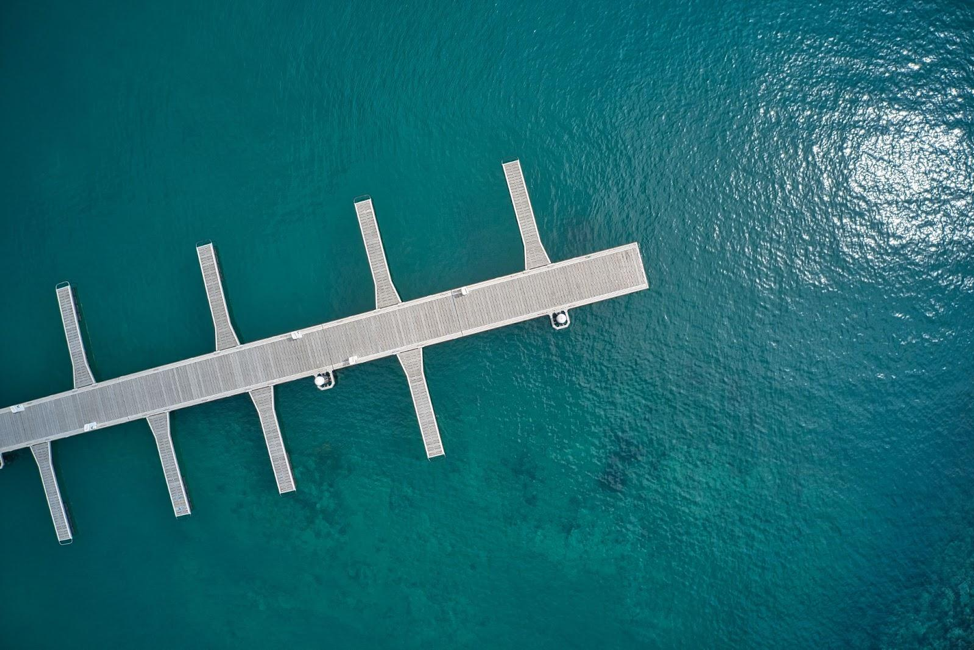Innovative Floating Docks: The Future of Waterside Access and Leisure
Innovative Floating Docks: The Future of Waterside Access and Leisure
Blog Article
Upgrade Your Waterside With Sturdy Floating Docks
Upgrading your waterfront with resilient floating docks can significantly boost both functionality and visual appeals, providing a versatile service for various water tasks. With a range of materials readily available, including low-maintenance options and typical wood, picking the ideal dock can match your individual design and fulfill useful needs.
Benefits of Floating Docks
Floating docks deal a wide variety of benefits that enhance their allure for numerous maritime applications. Unlike standard fixed docks, floating docks increase and fall with the trend, guaranteeing consistent availability for watercrafts and watercraft regardless of ecological problems.
Additionally, floating docks are much easier to relocate and mount, offering flexibility for momentary or seasonal usage. Their modular layout enables customization to fit certain demands, whether for private marinas, domestic beachfronts, or business applications.
Additionally, floating docks produce marginal disruption to the aquatic environment, protecting local environments and lowering the likelihood of erosion. They also supply enhanced safety and security and stability for users, as their resilient nature provides a more flexible surface than rigid frameworks.
Furthermore, floating docks can help with a varied series of activities, such as fishing, swimming, and entertainment boating, making them a valuable asset for beachfront development. Their adaptability and practicality make floating docks a recommended selection for a selection of naval projects.
Picking the Right Products
Selecting ideal materials for floating docks is essential to their long life, performance, and general effectiveness. When picking products, take into consideration elements such as environmental exposure, upkeep needs, and structural honesty. Usual products consist of timber, plastic, aluminum, and composite options, each offering unique advantages and drawbacks.
Timber, while visually pleasing, needs routine maintenance to stop rot and degeneration. Pressure-treated timber can enhance resilience, but it might still catch water damage over time. Plastic floats, often made from high-density polyethylene, are resistant to corrosion and call for marginal maintenance, making them an appealing choice for low-maintenance applications.
Aluminum is another practical alternative, recognized for its strength and lightweight buildings. It is resistant to corrosion and can withstand extreme weather conditions, although it may be extra costly than various other products. Compound materials combine the most effective characteristics of timber and plastic, supplying a low-maintenance and resistant choice that imitates the appearance of timber without the connected downsides.
Inevitably, the option of material ought to line up with the intended usage, environmental factors to consider, and budget plan restraints, ensuring a durable and practical floating dock that satisfies your certain demands.
Setup Refine Summary
The successful setup of a drifting dock counts on cautious preparation and implementation, making certain that it operates successfully in its intended setting. The primary step entails analyzing site problems, including water depth, More Bonuses coastline features, and prevailing weather condition patterns, which will notify the dock layout and anchoring system.
Complying with the website analysis, the next phase is to prepare the floating dock components. This consists of setting up the framework, protecting floats, and connecting any type of necessary hardware. It is critical to make certain that all connections are robust and water-resistant to stand up to aquatic conditions.
Once the dock is assembled, the installation process starts with placing the dock in the water. This can include a crane or various other training devices, particularly for bigger frameworks. Correct alignment is important for capability and security.

Maintenance Tips for Longevity
Routine upkeep is essential for making certain the longevity and optimal performance of a drifting dock. To attain this, begin with regular examinations at the very least two times a year, focusing on the integrity of the dock's structure, including the flotation tools and attaching equipment. Look for indicators of corrosion, wear, or damages, and attend to any issues without delay to stop further wear and tear.
Cleaning is an additional essential facet of upkeep. Eliminate debris, algae, and barnacles from the dock's surface to avoid unsafe problems and keep aesthetic allure. Utilize a mild detergent and a soft brush to avoid damaging the dock's products.
In addition, make certain that the dock is correctly anchored and safeguarded to stand up to seasonal modifications in water levels and climate conditions. Examine the anchoring system for stability and make modifications as essential.
Enhancing Your Outside Aesthetic
To produce a visually appealing outside space, incorporating a floating dock can substantially improve the general aesthetic of your waterside home. Floating docks are not only practical but can likewise act as a striking centerpiece that complements the natural environments - floating dock company. Readily available in numerous products and designs, these docks can be customized to match your residential or commercial property's architectural design and landscape
The addition of decorative elements, such as integrated lights or fashionable railings, even more raises the dock's aesthetic charm. Consider utilizing natural wood surfaces, which blend flawlessly with the environment, or selecting modern materials like aluminum or composite outdoor decking that provide a streamlined, modern appearance.
Purposefully placing planters or seating areas on or around the dock can create inviting spaces that urge relaxation click this and satisfaction of waterfront views. Furthermore, integrating colors and structures that balance with your landscape will create a cohesive visual throughout your exterior location.

Conclusion

Upgrading your waterside with sturdy floating docks can significantly boost both functionality and aesthetics, providing a versatile remedy for different water tasks. Unlike typical set docks, floating docks increase and fall with the tide, making sure regular access for watercrafts and boat no matter of environmental conditions.Choosing ideal products for floating docks is important to their durability, efficiency, and general efficiency.As soon as the dock is assembled, the installation procedure commences with positioning the dock in the water.In summary, floating docks deal many benefits, consisting of adaptability to water degree modifications and a variety of material choices.
Report this page